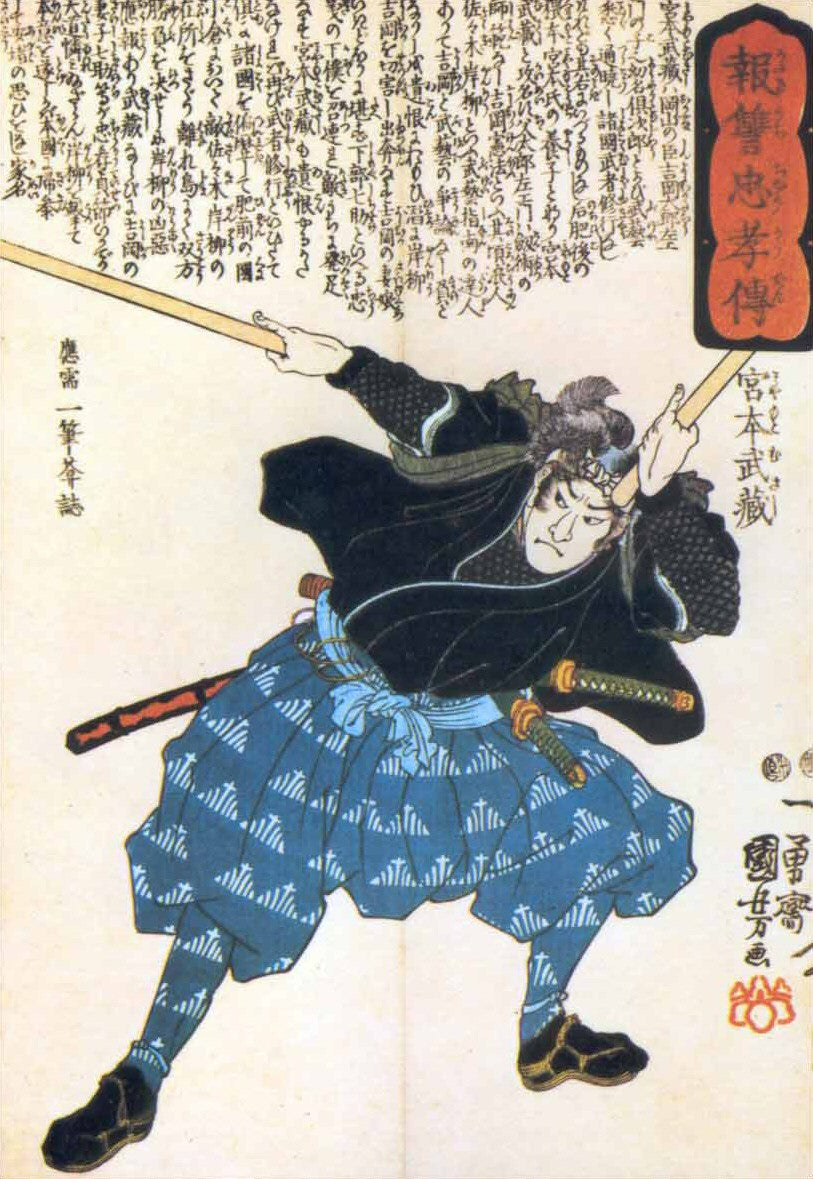Your Cart is Empty


Few swordsmen had the same level of influence on the Japanese kenjutsu as Miyamoto Musashi. Also known as Niten Doraku -- his Buddhist name -- Musashi's teachings would change the way in which kenjutsu is practiced for centuries to come.
Who Is Miyamoto Musashi?
Born sometime around 1584, possibly in the Harima Province of Japan, Miyamoto Musashi was a famous swordsman, writer and philosopher. He was best known for founding the Niten-Ichi-Ryû school of swordsmanship, where he taught a unique style of sword fighting.
Niten'ich
While teaching swordsmanship at his school, Musashi pioneered a new style that emphasized the use of two swords. This was important because prior to his teachings, samurai warriors and kenjutsu practitioners alike typically used only one sword. Even with daisho -- the principle of carrying a large sword and a companion sword or knife -- samurai warriors generally only used a single weapon at once. When they were in the open, samurai warriors would use their large sword, such as a katana, to engage their opponents. When they were in closed environment, they would use their smaller companion sword, such as the tanto, to engage their opponents.
Musashi, however, sought to create a new style of swordsmanship that leveraged the power of both weapons simultaneously. Known as niten'ichi, Musashi taught practitioners that they should use both swords at once, such as a katana and wakizashi.
It's unclear what led Musashi to teach niten'ichi. Some historians believe he was influenced by the two-handed style of drumming used by temple drummers, but others believe his own combat experienced prompted him to develop this dual-sword style of fighting. Nonetheless, niten'ichi became a core element of Japanese kenjutsu, with countless practitioners learning and applying his unique style of combat.
Even before Musashi, however, kenjutsu practitioners and samurai warriors would carry and use two swords. The key difference is that Musashi's niten'ichi involves using both swords at once. Before the advent of this swordsmanship style of fighting, samurai warriors would either use their large or small sword, depending on the situation. This was primarily because samurai warriors and practitioners used a two-handed grip. Regardless of which sword they were drawing, they would use use two hands to hold it. Musashi taught his students, however, to draw and hold their swords using one hand. This one-handed grip allowed practitioners to draw both swords simultaneously, this paving the way for a new style of kenjutsu that's still practiced to this day.